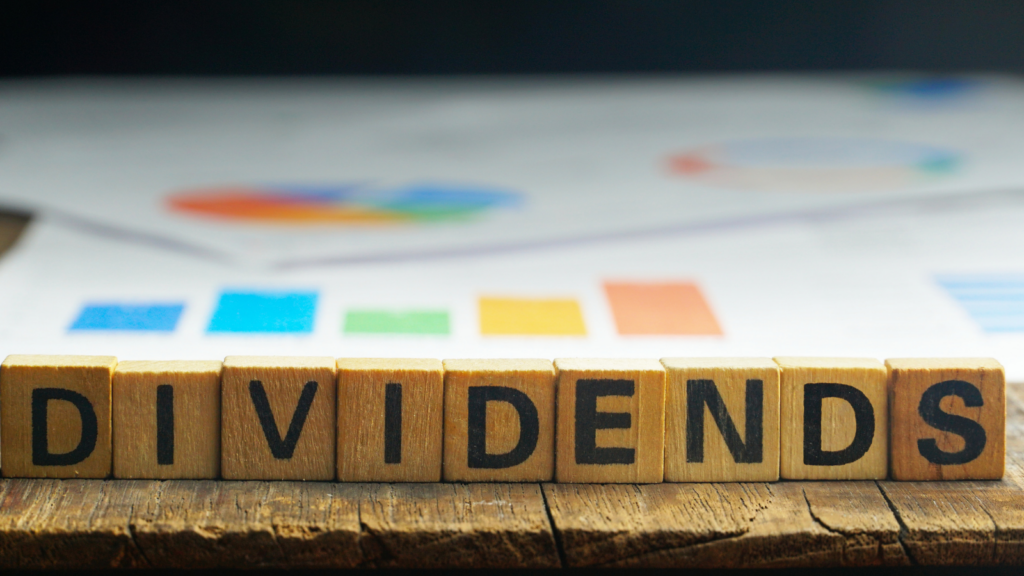When you invest in a company, you may receive periodic payments known as dividends. Dividends are payments made by a company to its shareholders out of its earnings. They can be paid in cash or stock, and the amount paid per share depends on a number of factors, including the company’s earnings and the number of shares outstanding. In this blog post, we’ll discuss what dividends are, who gets paid them, and how they work.
What Is a Dividend?
Dividend payments are an important way for companies to reward their shareholders. A company can use either cash or additional shares of stock as dividends, depending on what it believes will give the best return over time and satisfy any expectations from investors who might want more than just pure profit maximization at this point in a business’s life cycle.
Dividends are usually paid out quarterly, though some companies choose to pay them more or less frequently. The amount of the dividend is typically based on the company’s earnings and the number of shares outstanding, though other factors can come into play as well. For example, a company might decide to pay a special dividend if it has had a particularly good year.
Who Gets Paid Dividends?
In order to receive dividends, you must own the stock before the ex-dividend date. The ex-dividend date is the date on which the dividend is no longer payable to shareholders who purchase shares after that date. For example, if a company has an ex-dividend date of January 15, you must purchase the stock before that date in order to receive the dividend.
It’s important to note that dividends are not guaranteed. Even if a company has declared a dividend, it can still choose not to pay it out if its financial situation changes. For example, a company might decide to suspend its dividend payments if it is facing financial difficulties.

How Do Dividends Work?
Dividends are typically paid out in cash, though they can also be paid in stock. If the dividend is paid in cash, the shareholders will receive a check or direct deposit for the amount of the dividend. If the dividend is paid in stock, the shareholders will receive additional shares of the company’s stock.
The dividend payout ratio is the percentage of a company’s earnings that are paid out in dividends. For example, if a company has a dividend payout ratio of 50%, it means that 50% of its earnings are paid out in dividends and the other 50% are retained by the company.
The dividend yield is the number of dividends paid per share divided by the stock’s price. For example, if a company has a dividend yield of 20%, it means that its shareholders would receive $0.20 in dividends for every $0.00 invested in the stock.
Understanding Dividends
Dividends are one way to share profits with shareholders. Unlike cash dividends, which are paid out immediately and may be divided among individual investors in the form of checks or electronically through direct deposit into their account at any time during a given year (or more often), shares paying annual yields typically come pre-paid annually and cannot legally go back home again unless they’re sold first – meaning you’ve made some money off your investment!
… DIVIDENDS MUST BE APPROVED BY SHAREHOLDERS THROUGH THEIR VOTING RIGHTS; Although CASH DIVIDENDS ARE THE MOST COMMON type seen today, different species payouts can also include: STOCK OR OTHER PROPERTY… Along with Compounding ( reinvested earnings ) , Dividends provide an important source of return for shareholders.
Dividend-Paying Companies
The following industries are known for their regular issuance of dividends:
Basic materials-oil and gas companies
Oil and gas companies typically pay dividends to their shareholders because they are reliable and consistent sources of income. Board members and executives at oil and gas companies often receive significant portions of their compensation in the form of dividends, so it’s in their best interest to ensure that these payments are made regularly. Additionally, paying dividends helps a company attract more investors and maintain a strong stock price.
Banks/financials
Banks and other financial institutions pay dividends to their shareholders for a few different reasons.
The most common reason is that it’s a way to return some of the profits back to the shareholders. When a company is profitable, the board of directors may decide to pay out some of those profits as dividends to the shareholders.
Another reason banks and other financial institutions may pay dividends is because it’s a way to attract new investors. Dividends are a form of cash payment, so they can be attractive to investors who are looking for regular income from their investments.
Finally, banks and other financial institutions may pay dividends as a way to retain their current shareholders. If the dividend payout is higher than the rate of inflation, it
Healthcare & pharmaceuticals companies
Healthcare & pharmaceutical companies typically pay dividends to shareholders because they are stable, reliable businesses with consistent cash flow.
Shareholders receive dividends as a way of sharing the company’s profits and as a way of showing their appreciation for the shareholder’s long-term commitment to the company. Additionally, paying dividends helps to attract new investors by providing a steady income stream.
Healthcare & pharmaceutical companies generally pay out around 60% of their profits in the form of dividends, although this varies from company to company.
Wrapping Up Dividends
Dividends are a way for companies to share their earnings with their shareholders. They are typically paid out quarterly, though the exact timing and frequency can vary. In order to receive dividends, you must own the stock before the ex-dividend date. The dividend payout ratio is the percentage of a company’s earnings that are paid out in dividends, while the dividend yield is the number of dividends paid per share divided by the stock’s price.
Do you have any questions about dividends? Leave a comment below and we’ll do our best to answer them!




Responses